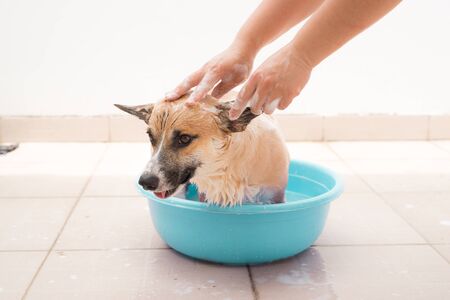1. Understanding Your Small Pet’s Natural Behaviors
If you want to create a safe, escape-proof habitat for your small pet, it’s essential to start by understanding their natural instincts and habits. Every small animal—whether it’s a hamster, gerbil, mouse, rat, or guinea pig—comes with a unique set of behaviors that directly influence how they interact with their home. Recognizing these tendencies not only helps prevent escape attempts but also keeps your pet happy and healthy.
Digging, Climbing, Chewing, and Burrowing: Why They Matter
Small pets are hardwired with certain instincts that drive them to explore and sometimes try to break free from their enclosures. Here’s a quick breakdown:
| Behavior | Why They Do It | What It Means for Habitat Design |
|---|---|---|
| Digging | To search for food or create tunnels, just like in the wild. | Needs deep bedding; avoid gaps at cage bottoms. |
| Climbing | To scout for food or escape predators; natural curiosity. | Add vertical space but secure lids and tops tightly. |
| Chewing | To keep teeth healthy and sharp. | Avoid weak plastic; use chew-proof materials like metal or thick glass. |
| Burrowing | For comfort, safety, and temperature control. | Provide plenty of bedding and hiding spots; check for hidden exit routes. |
The Escape Artist Mindset
Your small pet isn’t trying to be naughty—they’re just following their instincts! For example, a hamster might gnaw on cage bars because it’s curious or bored, while a mouse could squeeze through surprisingly tiny spaces thanks to its flexible body. Guinea pigs, meanwhile, love burrowing under piles of hay or bedding and can push open loose cage doors if not secured properly.
Common Escape Routes to Watch For
- Lids that don’t lock securely
- Corners where wire spacing is too wide
- Cage bases that aren’t attached firmly
- Poorly fitted tubes or tunnels
- Chewed-through plastic walls or corners
Quick Tip:
If you’re ever unsure whether your habitat is secure enough, try this: Think about what your pet does most—are they expert climbers? Persistent diggers? Once you know their favorite activities, you can adjust the design to match their habits and close off any potential escape routes before they even try!
2. Choosing the Right Enclosure Materials and Design
Comparing Cages, Tanks, and Habitats
When it comes to keeping small pets like hamsters, gerbils, mice, or even reptiles safe at home, the type of enclosure you choose really matters. Here’s a quick look at the main options:
| Type | Main Features | Pros | Cons |
|---|---|---|---|
| Cage (Wire) | Metal bars with a plastic or metal base | Great airflow; easy to clean; good for climbing species | Poor bar spacing can lead to escapes; some pets may chew bars |
| Tank (Glass/Acrylic) | Solid walls, usually with a mesh lid | Escape-proof if sealed well; no bar chewing; holds bedding inside | Poor ventilation if not properly vented; heavy and hard to move |
| Modular Habitat | Plastic tubes and connectable compartments | Fun for curious pets; customizable layouts | Harder to clean; some connections can come loose over time |
The Importance of Bar Spacing, Latches, and Chew-Proof Construction
Bar Spacing: If you’re leaning toward a wire cage, pay close attention to the space between the bars. Small pets are escape artists—hamsters and mice especially can squeeze through surprisingly tight gaps. For most rodents, bar spacing should be no more than 1/4 inch (about 6mm). Always check manufacturer guidelines based on your pet’s size.
Secure Latches: No matter what enclosure style you pick, make sure all doors and lids have sturdy latches that your pet can’t nudge open. Spring-loaded locks or twist locks are ideal. If your small pet is particularly clever or persistent, you might want to double-check the closure every day.
Chew-Proof Construction: Rodents love to gnaw! Make sure any exposed parts of the enclosure—especially corners or edges—are made from chew-resistant materials like metal or thick plastic. Avoid enclosures with thin plastic walls or weak connectors that could become escape routes over time.
Quick Tips for Escape-Proof Design
- Always check for gaps or loose parts before introducing your pet.
- Avoid enclosures with sharp edges that could harm your pet.
- If you notice your pet trying to chew a particular spot, reinforce it with metal guards or replace worn parts quickly.
- Add enrichment items inside so your pet stays busy and doesn’t focus on escape attempts.
Selecting the right materials and paying attention to design details will help keep your furry (or scaly) friend safe and secure at home.

3. Securing Doors, Latches, and Access Points
Why Security Matters
Small pets like hamsters, mice, rabbits, and guinea pigs are known for their curiosity and determination. Even the tiniest gap or a loose latch can quickly become an escape route. Keeping your pet’s habitat secure means being one step ahead of their clever little minds.
Types of Locking Mechanisms
| Lock Type | Best For | Pros | Cons |
|---|---|---|---|
| Slide Latch | Cages with wire doors | Simple to use, quick access | Can be nudged open if not fully engaged |
| Twist Lock | Aquariums, glass tanks | Sturdy, hard for pets to manipulate | May require two hands to open |
| Spring Clip | Travel cages, temporary enclosures | Easy to attach/remove, portable | Less durable for long-term use |
| Padlock or Carabiner | Persistent escape artists (e.g., rats) | Very secure, tamper-proof | Takes longer to unlock for cleaning/feeding |
How to Check for Weak Spots and Gaps
- Inspect regularly: Check all doors, corners, and seams at least once a week for signs of wear or bending.
- Tug test: Gently pull on each door or lid to ensure it doesn’t wiggle open. Pets often push repeatedly in weak spots.
- Pencil test: Try sliding a pencil through any openings. If a pencil fits, a small pet might squeeze through too.
- Monitor after cleaning: Sometimes reassembling parts leaves gaps. Double-check locks and latches every time you clean the habitat.
- Add extra security: Use zip ties or small carabiners as backup on main doors, especially for determined pets like ferrets or rats.
Common Problem Areas in Small Pet Habitats:
- Corners and hinges: Pets often gnaw at corners or push against hinges to widen gaps.
- Lid edges: Wire lids can warp over time; check that they sit flush with the cage walls.
- Sliding doors: These can shift out of alignment—make sure tracks are clear and straight.
- Bedding buildup: Bedding wedged under doors may prop them open slightly; keep edges clear when refilling bedding.
The Takeaway: Consistency Is Key!
The best way to prevent escapes is by making daily checks part of your routine. Simple habits like feeling around for gaps or double-locking doors can save you from frantic pet searches later on. Remember, what feels secure to us might look like an opportunity to our furry friends!
4. Creating an Enriching, Entertaining Environment
Why Enrichment Matters for Small Pets
Small pets like hamsters, gerbils, mice, and guinea pigs are naturally curious and active. When their environment is boring or lacks stimulation, they can become restless and may try to escape just for something to do. By creating an engaging habitat, you not only keep your pet happier but also reduce the chances of boredom-driven escapes.
Fun Ways to Keep Your Pet Busy
There are lots of simple and affordable ways to make your small pet’s home more exciting. Here are some ideas:
- Toys: Chew toys made from safe wood or cardboard satisfy their natural gnawing instincts and keep teeth healthy.
- Tunnels: Cardboard tubes or plastic tunnels mimic burrows and encourage exploration.
- Levels and Platforms: Adding ramps or shelves gives your pet new places to climb and perch.
- Hiding Spaces: Small boxes or hideaways help your pet feel secure and offer a private place to rest.
Enrichment Ideas at a Glance
| Enrichment Item | Benefits | Tips for Use |
|---|---|---|
| Toys (chews, balls) | Prevents boredom, supports dental health | Rotate toys weekly for novelty |
| Tunnels & Tubes | Mimics natural burrows, promotes exercise | Arrange in different patterns for variety |
| Levels & Platforms | Adds climbing opportunities, expands territory | Ensure ramps are secure and not too steep |
| Hiding Spaces | Makes pets feel safe, reduces stress | Add more than one hideout for multiple pets |
Pro Tips for a Happy, Secure Pet Habitat
- Change the layout every couple of weeks to keep things fresh and interesting.
- Avoid overcrowding with too many items—give your pet enough space to move around freely.
- Always use materials that are safe if chewed or nibbled on.
- If using store-bought toys, check labels for non-toxic certification.
- Observe which features your pet uses most and adjust their habitat based on those preferences.
Boredom-Busting Design = Fewer Escapes!
The more fun and interesting your pet’s environment is, the less likely they’ll be tempted to break out. A thoughtfully designed habitat keeps your furry friend entertained, mentally stimulated, and safely where they belong.
5. Routine Maintenance and Escape Checks
Keeping your small pet’s home truly safe means making daily habits out of maintenance and escape checks. While a sturdy cage or enclosure is the foundation, it’s the regular, hands-on care that really prevents sneaky escapes and keeps your furry friends healthy and happy.
Make Daily Checks a Habit
Every day, take a quick look at all parts of your pet’s habitat. Doors should be securely latched, locks tight, and no gaps where little paws could push through. Even curious pets can become escape artists overnight if something changes in their environment.
What to Look for Each Day
| Area | Daily Check |
|---|---|
| Doors & Latches | Are they closed tightly? Any signs of wear? |
| Bars & Mesh | No bends or gaps? All bars intact? |
| Corners & Seams | No loose edges or openings? |
| Flooring | Is the base secure? No holes or weak spots? |
| Toys & Accessories | No moved items creating escape ramps? |
Schedule Deep Cleans and Inspections
A clean habitat isn’t just nice—it’s essential for spotting problems. Once a week, do a deep clean and thorough inspection. This is your chance to check for chewed areas, worn-out mesh, or broken clips that you might miss during quick daily checks.
Weekly Inspection Tips
- Remove all bedding and accessories to inspect every inch.
- Check under hideouts and in corners for hidden damage.
- Squeeze bars gently—any looseness could mean trouble.
- If you spot wear, repair or replace parts right away.
The Power of Consistency
By turning maintenance and escape checks into part of your daily and weekly routine, you’ll catch small issues before they become big problems. Plus, these habits give you peace of mind knowing your pet is safe, secure, and living their best life right at home.
6. Guidelines for Supervising Out-of-Habitat Time
Why Supervised Play Is Important
Letting your small pet explore outside their enclosure is great for their mental and physical health, but it also comes with risks. Small animals like hamsters, gerbils, and mice are curious by nature, love to squeeze into tight spaces, and can easily get lost or hurt if left unsupervised. That’s why safe supervision and a pet-proofed play area are must-haves for any responsible pet owner.
Setting Up a Safe Play Zone
The first step is to choose an area that’s easy to monitor and secure. Think about using a playpen or blocking off a section of a room. Make sure the space is free from hazards like electrical cords, small gaps, or places where your pet could hide or escape. Here’s a quick checklist to help you set up:
| Pet-Proofing Task | What to Do |
|---|---|
| Block Off Exits | Seal doors, under furniture, vents, and any gaps larger than your pet’s head. |
| Remove Hazards | Pick up electrical cords, small objects, sharp items, and houseplants (some can be toxic). |
| Cover Carpets & Rugs | Lay down a washable mat in case of accidents or chewing. |
| Supervise at All Times | Never leave your pet unattended during out-of-habitat time. |
Safe Handling Tips During Playtime
Your small pet might be fast and wiggly! Always use gentle hands when handling them. If your pet isn’t used to being held, let them approach you first. Avoid sudden movements and loud noises—these can startle small animals and make them want to run and hide. Here are some more tips:
- Scoop, Don’t Grab: Use both hands to gently scoop up your pet instead of grabbing from above.
- Stay Low: Sit on the floor so if your pet jumps or falls, it won’t be far.
- No High Surfaces: Avoid letting pets play on tables or beds where they could accidentally fall.
- Treats Help: Encourage positive interactions with treats or favorite toys.
- Monitor Interactions: If kids are involved, always supervise closely and teach them how to be gentle.
Quick Reference: Do’s & Don’ts for Out-of-Habitat Time
| Do’s | Don’ts |
|---|---|
| Use a secure playpen Keep other pets away Watch closely at all times Make the area fun with tunnels & toys Reward calm behavior |
Leave the room Allow access to wires or plants Handle roughly or chase Place play area near stairs Forget to check for hiding spots |
A Little Extra Fun: Enrichment Ideas
Add cardboard tunnels, chew toys, and hideouts to the play zone. Change things up each session to keep your pet engaged and curious—they’ll love the variety!


